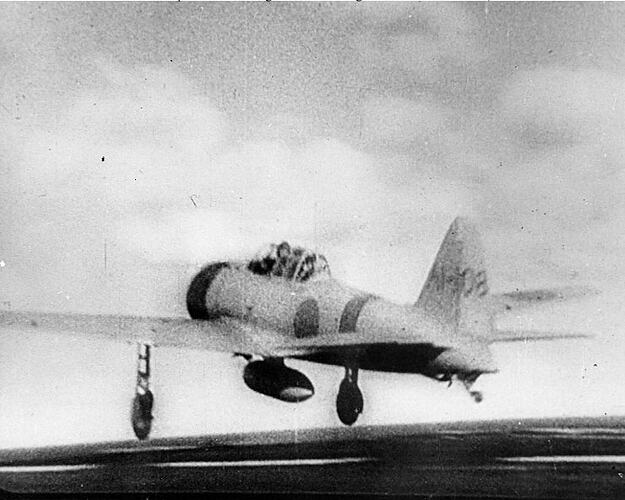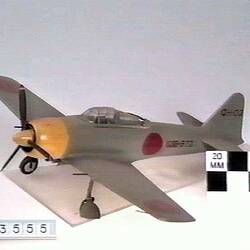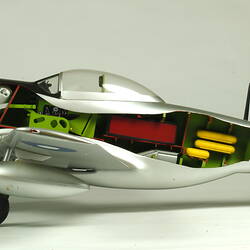First flown in April 1939, the Rei-Sen (Zero) naval fighter was designed by Jiro Horikoshi, chief designer for Mitsubishi Jukogyo KK. The Zero incorporated all the most advanced features of fighter aircraft design and was not a copy of any particular Western design. Despite being intended for use from Imperial Japanese Navy (IJN) aircraft carriers, it was first used in combat over China in September 1940. By the time of the Japanese attack on Pearl Harbour and South-East Asia in December 1941, the A6M2 Model 21 Zero equipped most front-line IJN land and carrier-based air groups.
In the hands of highly trained IJN pilots it was clearly superior in performance to the British and American fighters used at this time which came as a shock to Western assumptions of technical and racial supremacy. However the Zero also had critical flaws including a low-powered engine, lack of armour-plate and no self-sealing fuel tanks. The A6M2 took part in attacks on Australia including raids on Broome and Darwin and was widely used in New Guinea against Australian forces. Captured examples were flight-tested in Brisbane by the Technical Air Intelligence Unit (TAIU). The A6M3 Model 32 was introduced in 1942 with a more powerful Nakajima Sakae NK1F engine and shorter, squared-off wings caused by the removal of the folding wingtips used for carrier versions. It had less range than the A6M2 model as the larger engine took up space formerly used for fuel.
By 1943, the Zero was clearly obsolete and most of the best IJN pilots had been killed during the Battle of Midway in June 1942. The design was developed further until 1945 by which time Japan's capacity to mass-produce aircraft had been almost completely destroyed. Even at the outset of the war Japan's limited supply of raw materials and manufacturing capacity doomed any attempt to establish military superiority over the United States. Restoration work on the Australia War Memorial's A6M2 Zero in the 1980s revealed that some of the aluminium had been imported from Germany. Nearly 11,000 Zero fighters had been built by August 1945, the largest production total of any Japanese aircraft type.
More Information
-
Keywords
-
Localities
-
Authors
-
Article types





